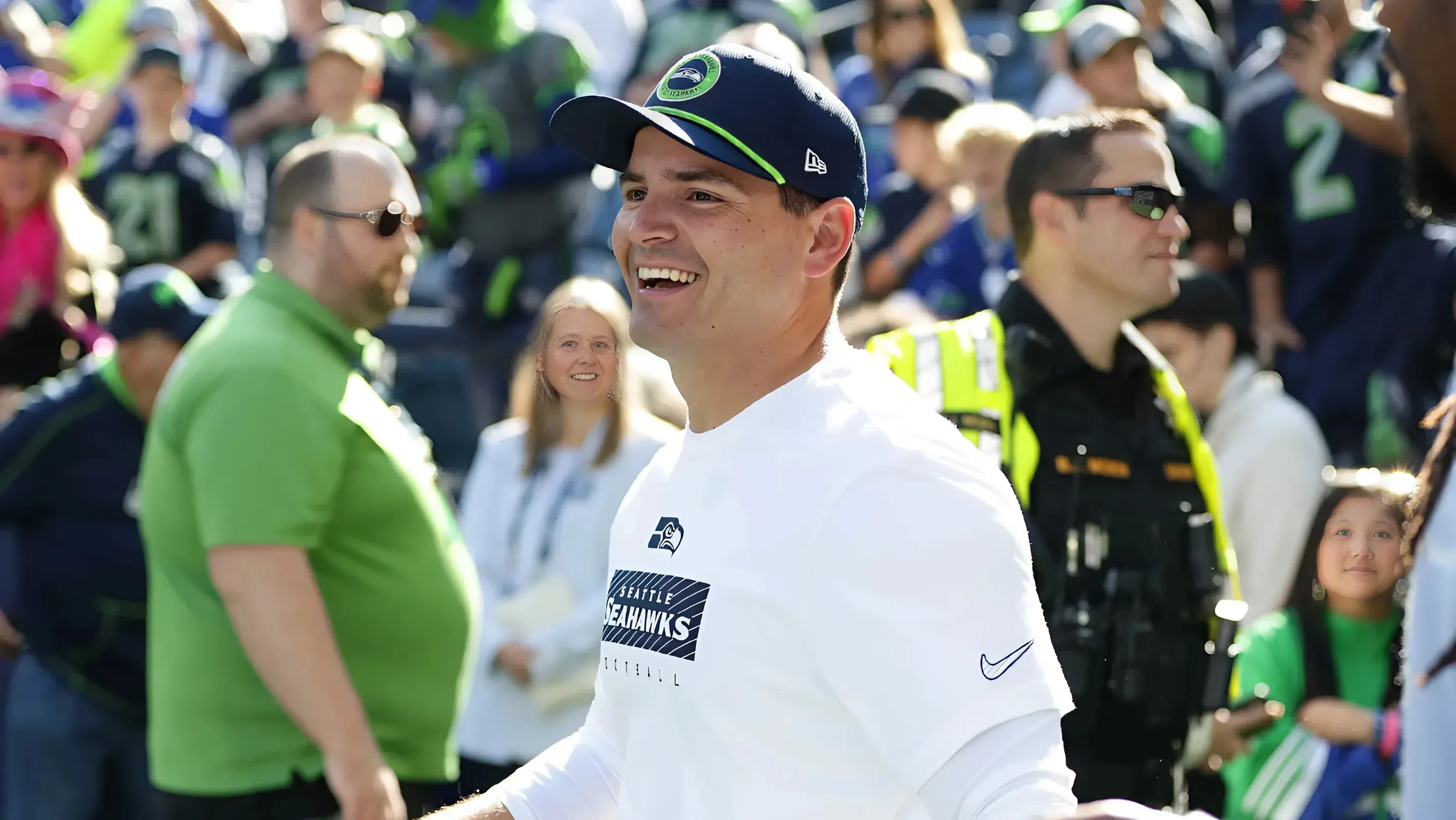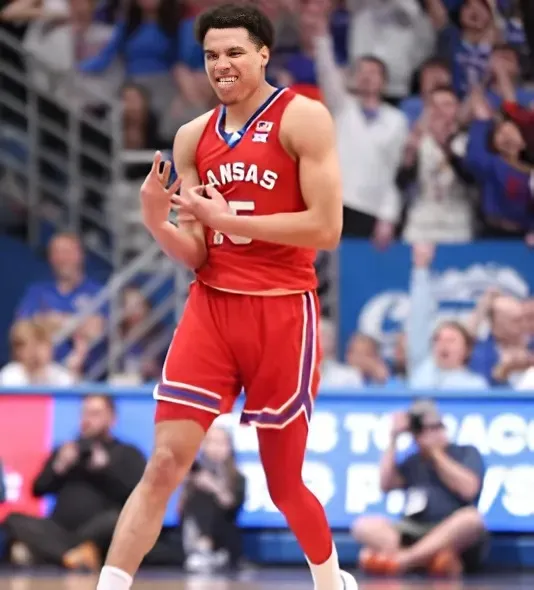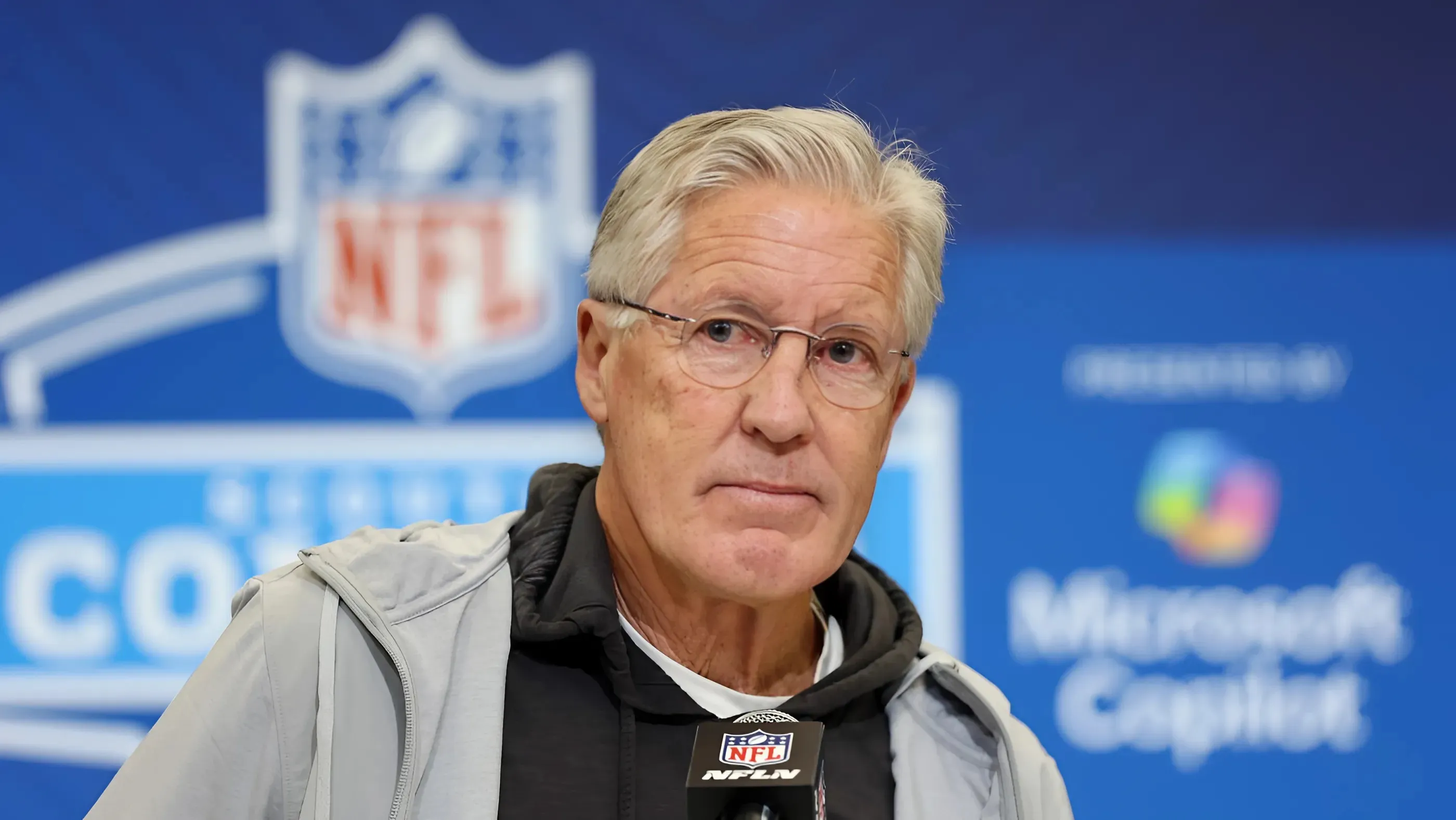Some view the Los Angeles Rams success or failure in the off-season to be hitched to the team's ability to renegotiate an acceptable contract with veteran quarterback Matthew Stafford. But that is a contract that is unlike to reach any resolution quickly. And do the Rams really 'succeed,' if they lock themselves into a multi-year contract with a veteran quarterback who they already have under contract?

That seems to defy logic and common sense.
The true challenge of the offseason, and perhaps the player that too few are talking about, is the vital team-friendly extension of left tackle Alaric Jackson. Let's be honest. If the team hopes to keep veteran quarterback safe and healthy in the sunset years of his NFL career, the team cannot count on a rookie blind-side offensive tackle to get the job done. Whatever you may or may not realize about Alaric Jackson, one thing is clear: He is the successor to now-retired LT Andrew Whitworth, and he has done an excellent job as the team's starting left tackle.
When you consider that the team signed him after the 2021 NFL Draft, his meteoric rise to the starting role for the team at left tackle is even more astounding. Now, he faces free agency after his rookie contract has expired, putting the Rams front office at a perilous fork in the road. Do the Rams extend Alaric Jackson, sticking with their tried-and-true starting left tackle? Or do the Rams try a different option?
The challenge with Alaric Jackson is much the same as with any extension, free agent signing, or drafted player. Any resources directed to compensate Jackson are depleted in terms of their use to sign/pay another player. That means that any 'just pay the guy his money,' reactions on social media that you will undoubtedly witness come at a steep price.
You see, the Rams have a complex challenge on the offensive side of the football in 2025. Unlike a defense that has water under the bridge in terms of young players, a new defensive philosophy, and finding the right roles for the right players, the Rams offense is challenged from the opposite direction. How can this offense bolster its ability to score points? And how must this team address the two offensive tackle positions in the offseason?
After all, the team not only must contend with the expired contract of LT Alaric Jackson, but right tackle Rob Havenstein is growing long in the tooth as well. The team must also have an eye on Rob Havenstein's logical successor this offseason. So how can the team resolve Jackson's expired contract?
One option tossed around is the use of the NFL Franchise or Transition tag? What exactly is that?
NFL Franchise/Transition Tags
The NFL and NFLPA have negotiated rules that bind players to NFL teams or free players to negotiate with any NFL team (free agency). The challenge is that many players who had become the focus of a roster construction with one team were free to leave that team and negotiate with a new team, leaving the former team with a custom-built roster that rapidly deflated due to one player's decision to value compensation over competition.
To limit that mass exodus, the two sides negotiated a limited but effective means of aiding teams by using one exclusive one-year-only obligation for a player known as the Franchise or Transition Tag. The window for designating a player with either a Franchise or Transition tag begins on February 18, 2025, and remains open until March 4, 2025, at 1:00 pm PT. If a player is tagged, they receive a one-year tender offer contract.
There are three different tags that can be used in the NFL annually. They are:
- NON-EXCLUSIVE TAG: The most frequently used, this tag allows the player to sign an offer sheet with another team. However, the original team has the right to match the offer or receive two first-round draft picks in compensation if the player leaves.
- EXCLUSIVE TAG: Less frequently used, this tag completely prohibits the player's agent from seeking an offer sheet, essentially forcing the player and team into exclusive contract negotiations.
- TRANSITION TAG: Much like the nonexclusive franchise tag, this tag provides the team the right to match the other team's offer. If the original team decides not to offer a matching bid, no compensation is due.
Once a player is tagged, the two sides have until July 15 to sign a long-term contract or, by NFL rule, the player will play on the one-year deal (or hold out).
So the question is, why isn't more being said about the LA Rams and the option to use this tool to retain Alaric Jackson's services through 2025? Why indeed.
Rams history of using their Franchise Tag
The LA Rams hesitate to use either the Franchise or Transitional Tags. Rams GM Les Snead has hinted in the past that he shies away from the use of a tag as an equivalent to negotiating a new player contract to that of an "In Case of Emergency, Break Glass" fire alarm placed in hallways. The Rams have used tags in the past until 2018. The history of the team's use of tags can be summed up in the data below:
- 1998 – DB (CB) Ryan McNeil
- 2000 – DL Kevin Carter
- 2003 through 2005 – OT Orlando Pace
- 2009 – DB (S) O.J. Atogwe
- 2016 through 2017: DB (CB) Trumaine Johnson
- 2018: – DB (S) LaMarcus Joyner
To Les Snead, tags are truly a last-ditch effort to halt a player's exodus if the team is passionate about re-signing that player. But that emergency obligation of a player for a one-year contract is incredibly pricey. Per OverTheCap.com, franchise tags for a quarterback cost over $41 million in 2025, while a tag for an offensive lineman is over $25 million.
Despite the LA Rams benefiting from an offseason that starts with available free salary cap space, the team cannot let those hefty sacks of cash fly out the door early in the offseason. While Alaric Jackson is a dependable, if not elite, performer for the team as a vital keystone position, laying out $25 million for 2025 is a terrible way to open up the 2025 offseason.
Keep in mind that the team quite frequently allows players to discover what the market will bear for their services by entering the NFL Free Agency market. If that market is not robust, the team is often willing to sign players at a discount. If the player is willing to give the Rams a home town discount (much like IOL Kevin Dotson did in 2024), the Rams are delighted to ink a contract quite quickly.
Alaric Jackson may not be willing to do so. After all, he was the starter for the past two seasons while his backup and teammate, Joe Noteboom, pulled in much larger paychecks. This is Jackson's first chance to discover what his market may be, and with his track record, you can expect multiple teams to bid for his services.
If OTC.com estimates are in the right ballpark, Jackson could pull in over $13 million per year with his next multi-year contract. Converting that annual contract value through OTC's currently projected awarded compensatory picks table, may result in the LA Rams receiving an awarded Round 5 compensatory pick in the 2026 NFL Draft.
We all know that the LA Rams love comp picks.
What will the Rams do this offseason? I really don't know. But isn't that the fun of it all? The team is already hard at work running through hundreds of mock draft simulations to determine the quality and quantity of prospects likely to be on the draft board as the team steps up to the podium. While that may play a factor in the team's offseason strategy, the crux of extending Alaric Jackson will come down to Jackson's wishes.
Will he give a priority to signing with the team when the offer comes? Or will he be lured away by sacks of cash? Depending on his desire, I'm quite certain the Rams will follow suit with a winning strategy.
As always, thanks for reading.



